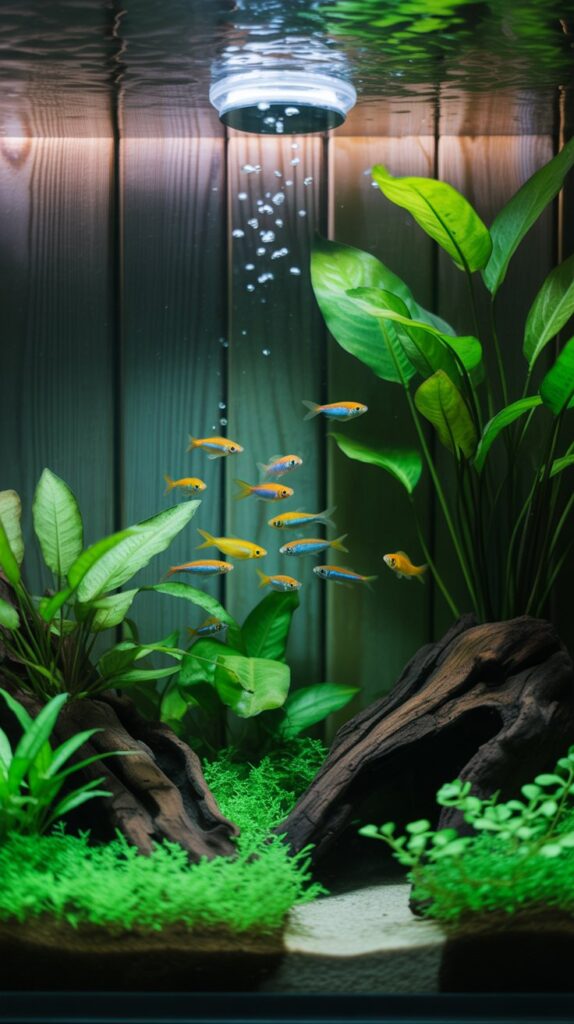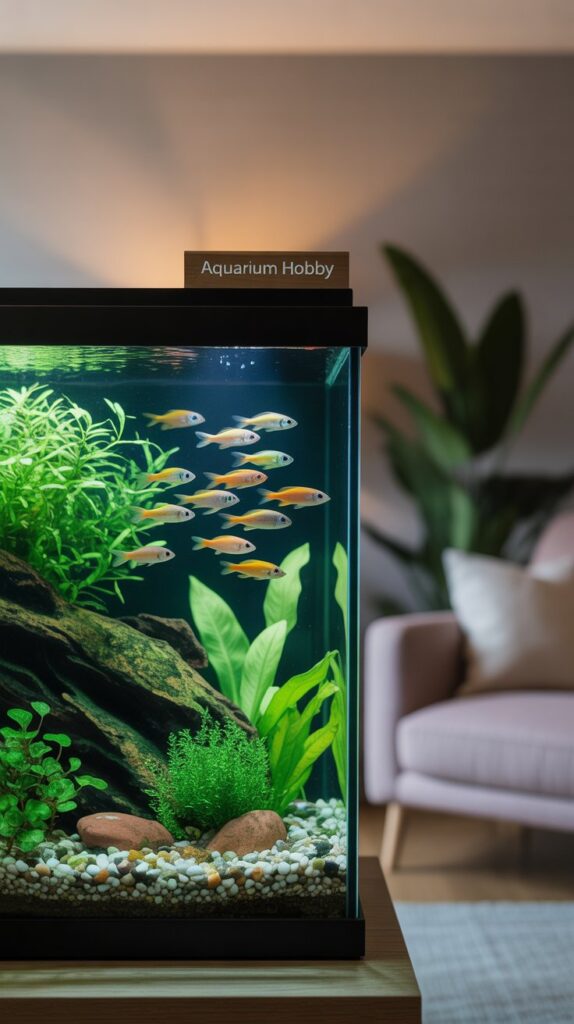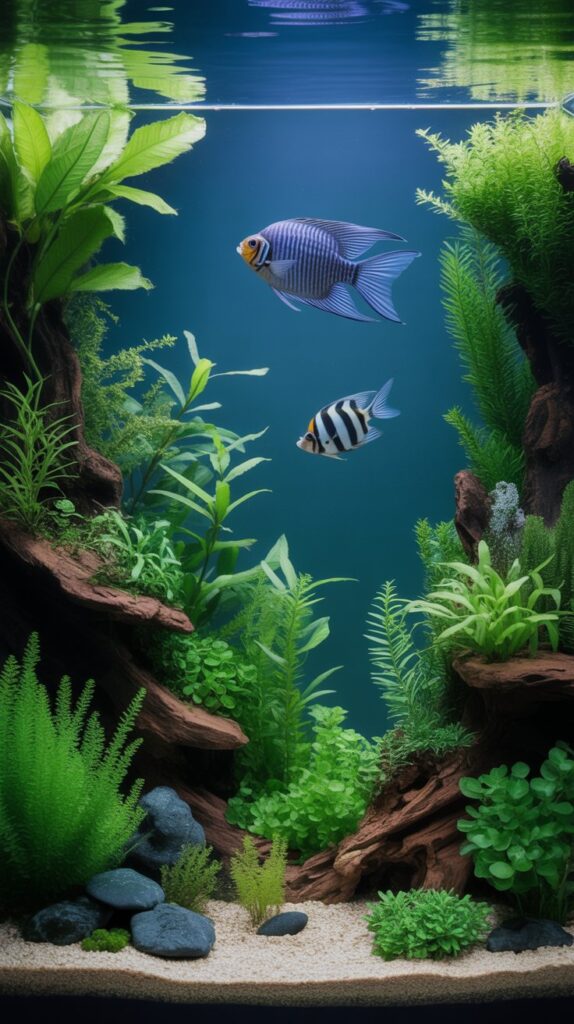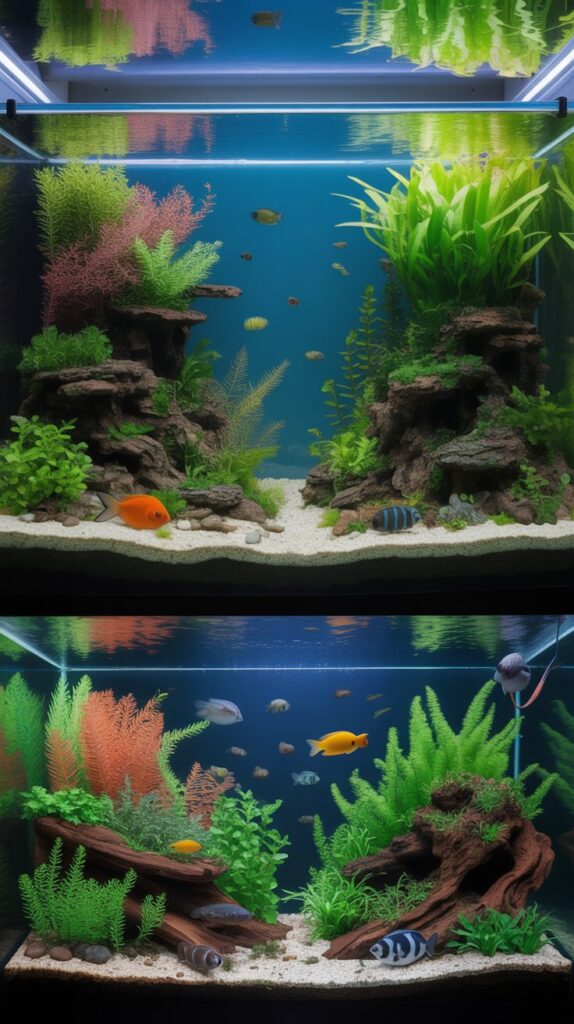Aquariums are more than just decorative glass boxes filled with water. They are vibrant ecosystems that allow hobbyists to explore the beauty of aquatic life, from colorful fish and invertebrates to lush aquatic plants and corals. Choosing the right aquarium type is the first step to creating a thriving aquatic environment. Whether you are a beginner or an experienced aquarist, understanding the different aquarium types will help you design a setup that aligns with your goals, budget, and experience level.
In this detailed guide, we’ll explore the various types of aquariums, their features, benefits, and challenges. By the end, you’ll have a clear understanding of which type of aquarium best suits your needs.
Why Choosing the Right Aquarium Type Matters
Selecting the right aquarium type is crucial because each setup has different requirements in terms of equipment, maintenance, and knowledge. For example, a freshwater community tank is relatively easy to maintain, while a reef tank requires advanced knowledge, expensive equipment, and constant monitoring.

The type of aquarium you choose determines:
- The kind of fish and plants you can keep
- The complexity of maintenance
- The overall cost of the setup
- The aesthetic appeal of your aquascape
Major Aquarium Types
1. Freshwater Aquariums
Freshwater aquariums are the most common and beginner-friendly type of aquarium. They use tap water treated with dechlorinator and are typically stocked with freshwater fish and plants.
Subtypes of Freshwater Aquariums:
- Community Tanks: Contain peaceful fish species like guppies, tetras, mollies, and platies.
- Species-Specific Tanks: Dedicated to one species, such as bettas or goldfish.
- Biotope Tanks: Mimic a natural habitat (e.g., an Amazon River setup with angelfish and plants).
- Planted Tanks: Focus on growing live plants, often with specialized lighting and CO₂ systems.
Pros: Affordable, beginner-friendly, huge variety of fish and plants.
Cons: Limited in terms of exotic species compared to saltwater setups.
2. Saltwater Aquariums
Saltwater aquariums are more complex and suited for intermediate or advanced aquarists. They require saltwater, which can be made by mixing marine salt with purified water, or by using natural seawater.
Subtypes of Saltwater Aquariums:
- Fish-Only Tanks (FO): Contain only saltwater fish like clownfish, tangs, and lionfish.
- Fish-Only with Live Rock (FOWLR): Incorporates live rock to provide natural filtration and habitat.
- Reef Tanks: The most advanced type, featuring corals, invertebrates, and reef-safe fish.
Pros: Exotic species, stunning colors, and natural-looking reefs.
Cons: Expensive, high maintenance, requires advanced equipment like protein skimmers.
3. Brackish Aquariums

A brackish aquarium contains water with salinity between freshwater and saltwater. Brackish water setups mimic estuaries, mangroves, and coastal areas.
Popular brackish fish include:
- Archerfish
- Scats
- Monos
- Pufferfish
Pros: Unique species not found in freshwater or full saltwater setups.
Cons: More challenging than freshwater, limited plant and fish options.
4. Coldwater Aquariums
Coldwater aquariums are designed for species that don’t require heaters. The most common coldwater fish are goldfish and koi, though koi are better suited for outdoor ponds.
Pros: No heater required, hardy fish species.
Cons: Limited fish choices, larger tank size often required for goldfish.
5. Tropical Aquariums
Tropical aquariums are heated freshwater setups, typically kept between 24–28°C (75–82°F). They allow hobbyists to keep a wide variety of colorful species.
Popular tropical fish include:
- Guppies
- Angelfish
- Bettas
- Gouramis
- Corydoras catfish
Pros: Vibrant fish, suitable for beginners, endless stocking possibilities.
Cons: Requires consistent heating and monitoring.
6. Planted Aquariums

A planted aquarium focuses on aquatic plants rather than fish. Some aquarists keep only plants, while others combine them with small, peaceful fish or shrimp.
Types of planted aquascapes:
- Dutch Style Aquascape: Dense plant arrangements with little hardscape.
- Iwagumi Aquascape: Minimalist rock-based layout with carpets of plants.
- Jungle Style Aquascape: Natural, overgrown look with varied plant species.
Pros: Visually stunning, natural filtration, healthier environment for fish.
Cons: Requires special lighting, fertilizers, and sometimes CO₂ injection.
7. Paludariums
A paludarium is a hybrid tank that combines both aquatic and terrestrial environments. It can house fish, amphibians, reptiles, and semi-aquatic plants.
Pros: Diverse ecosystem, beautiful natural look.
Cons: More complex setup and maintenance.
8. Nano Aquariums
Nano aquariums are small tanks, typically under 10–20 gallons. They are popular for apartments, offices, or people with limited space.
Popular nano species include:
- Betta fish
- Shrimp
- Small schooling fish like neon tetras
Pros: Compact, affordable, easy to maintain.
Cons: Limited stocking options, water parameters can fluctuate quickly.
9. Biotope Aquariums
A biotope aquarium is designed to replicate a specific natural environment, including the water conditions, plants, and fish from that ecosystem.
Examples include:
- Amazon River Biotope (angelfish, discus, Amazon swords)
- African Rift Lake Biotope (cichlids, rocky decor)
Pros: Educational, realistic, and natural-looking.
Cons: Restrictive in terms of fish and plants.
10. Breeding Aquariums
These are special setups designed for breeding fish. They often include sponge filters, hiding spots, and bare bottoms for easy cleaning.
Pros: Encourages healthy breeding, helps raise fry safely.
Cons: Requires additional tanks and equipment.
Factors to Consider When Choosing an Aquarium Type

- Experience Level – Beginners should start with freshwater before moving to saltwater.
- Budget – Saltwater and reef tanks can cost thousands, while freshwater setups are budget-friendly.
- Available Space – Larger tanks are more stable but require more room.
- Maintenance Commitment – Some setups need daily care, while others require minimal effort.
- Aesthetic Preference – Do you prefer colorful corals, lush plants, or simple goldfish tanks?
Essential Equipment for All Aquarium Types
Regardless of the type, most aquariums need:
- Aquarium filter
- Heater (for tropical setups)
- Lighting system
- Water test kits
- Substrate (gravel, sand, or aqua soil)
- Decorations or aquascaping materials
- Air pump (optional but useful)
Common Mistakes to Avoid
- Overstocking the tank with too many fish.
- Skipping the nitrogen cycle process.
- Mixing incompatible species.
- Using improper lighting for planted or reef tanks.
- Neglecting regular maintenance.
Conclusion
The world of aquariums is vast and fascinating, with countless possibilities depending on your interests, experience, and budget. From simple freshwater tanks to complex reef ecosystems, the choice of aquarium type can shape your entire fishkeeping journey. Beginners should start small with freshwater community tanks, while seasoned aquarists may explore saltwater reefs or specialized biotope tanks.
With the right knowledge and preparation, any aquarium type can become a thriving, beautiful aquatic world.
FAQs about Aquarium Types
1. What is the easiest aquarium type for beginners?
Freshwater community tanks are the easiest for beginners since they are affordable, forgiving, and low-maintenance.
2. Which aquarium type is the most expensive?
Reef aquariums are the most expensive due to specialized equipment, corals, and marine fish.
3. Can I convert a freshwater aquarium into a saltwater one?
Yes, but you’ll need new equipment like protein skimmers, live rock, and marine salt.
4. What is the difference between tropical and coldwater aquariums?
Tropical aquariums require heaters to maintain warm temperatures, while coldwater tanks house species like goldfish that thrive in cooler water.
5. Are nano aquariums good for beginners?
They can be, but beginners must be careful as water parameters fluctuate quickly in small tanks.
6. Which aquarium type requires the least maintenance?
Freshwater community tanks and coldwater goldfish tanks are among the lowest maintenance.
7. What is a biotope aquarium?
It is a setup designed to replicate a specific natural ecosystem with native fish, plants, and water conditions.
8. Can I keep live plants in all aquarium types?
Not all – live plants thrive in freshwater, especially planted tanks, but many cannot survive in brackish or saltwater setups.
9. Do all aquariums need a filter?
Yes, filters are essential for maintaining water quality and removing waste, although some heavily planted tanks can function with minimal filtration.
10. Which aquarium type looks the most natural?
Planted and biotope aquariums tend to look the most natural, closely mimicking real ecosystems.

